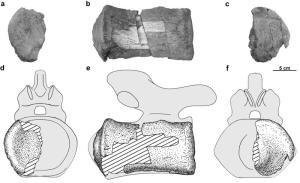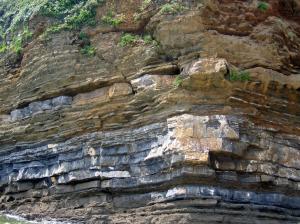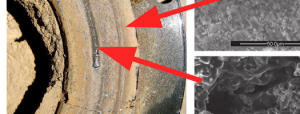Scientists have identified several of the “biggest, baddest” theropods, and everyone asks, “Which one is the very biggest?” Giganotosaurus? Spinosaurus? T. rex? Acrocanthosaurus?
“I think they’re all reaching the maximum size a two-legged, large-bodied carnivore can get,” explains Peter Larson, T. rex expert (Wyrex is his eighth rex excavation!). “All of these creatures are hovering at around the same size, and the differences are going to be in inches and a few pounds!”
But this doesn’t settle another issue: differences between T. rex specimens themselves. Check out the different skulls – so far, all considered to be of the same species – and see if soon we’ll have Tyrannosaurus X, a rex cousin.
“Are you my mommy?” One of the biggest debates in the T. rex family tree is the nature of its offspring. Sure, some youngsters have been found, but there’s this pesky issue ofNanotyrannus. Most scientists believe the Nano is its own, related, slightly smaller species, a pygmy Tyrannosaur with relatively longer legs, a slimmer body, and narrower teeth – but some people have wondered if Nano isn’t really just a young rex. Scientists on both sides of the fence have compared its parts, of which there are only one isolated skull and a recently-discovered skeleton, to other fossils identified as “legitimate” T. rex kids. What do you think? Check out the Web site at the Burpee Museum, www.burpee.org, where they’re working on this new skeleton.
Morphoptypes
There are two “morphotypes” of T. rex, called “robust” and “gracile.” Or “beefy” and “wimpy.” Okay, maybe not wimpy, but in this type, nearly every bone is more delicate, and/or shaped a bit differently. What does this mean?In most species – of every kind of creature, not just dinosaurs – these morphotype differences indicate gender. Sometimes these morphotypes have made scientists wonder if they’re looking at two genders of the same creature, or two closely-related species (different creatures altogether). It’s not always easy to tell, but since the morphotypes are so similar, scientists believe we have identified male and female T. rex. Which is which? Check out “Gender” under Traits.
Skeleton
Has every bone of T. rex been found? How do we know for sure? It would be so much easier if they were walking around now, so we could see every little detail. But they’re not. So we add up everything we have found so far, on all specimens, and we make some conclusions. This is what we know up until, well, yesterday.
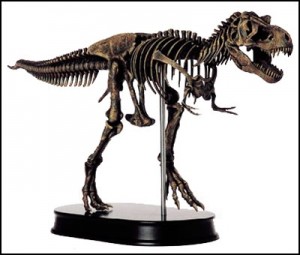
skeleton
- FAQ: Did T. rex stand like a tripod with its tail dragging on the ground, or balanced like a teeter-totter with its tail in mid-air?
- FAQ: What’s that big upside-down, T-shaped bone hanging down from the pelvis?
- FAQ: Would every T. rex have exactly the same number of bones?
- FAQ: How can you tell how the bones fit together?
- FAQ: Could T. rex have used its tail as a weapon? How can you tell?
Skull
Everyone automatically thinks of T. rex‘s head as its coolest part because it looks so scary. But as the animal’s cockpit, the skull also holds a computer and tons of important information (especially about the senses). T. rex became a little less mysterious when scientists excavated Stan – the specimen with the best skull. It was disarticulated, but that meant we could see inside as never before.

skull
Kinesis, or the ‘Art of Eating Things Bigger than Your Head’, allowed T. rex to eat in a rather indelicate way. Still, it also provided necessary shock absorption – like in birds. Just imagine being a woodpecker, whack, whack, whack – or chomping through someone’s leg bone – without a little “give” in your head.
Teeth
The teeth in your mouth have different shapes and functions – sharp ones cut food; flat ones mash it up. T. rex had only one basic shape of tooth: pointy, serrated bananas (although they vary slightly, from rounder to D-shaped to skinnier, and come in different sizes). T. rex had no mashing teeth, which means no chewing! Imagine what that meant for T. rex‘s eating habits: bite, shear, swallow.
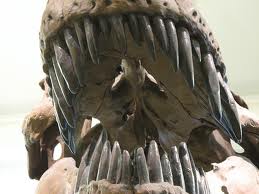
- teeth
The lower, or dentary, teeth are rounder in cross-section than the upper, or maxillary teeth. All T. rex teeth have two serrated edges for cutting. Most have one in front and one in the back, but the position of the serrations depends on each tooth’s position in the mouth. The serrations follow the shape of the jaw, like a cookie cutter – so T. rex could bite chunks that would fit in its mouth. At the back of the mouth, serrations are at the front and back; by the time you get to the front of the jaw, the serrations are both on the back of the tooth.
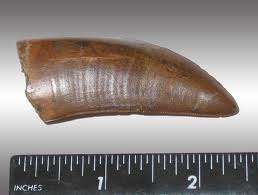
teeth1
Scientists usually find T. rex teeth in two conditions: shed and rooted. A whole tooth, with its root still attached, looks rather like an entire banana. The presence of rooted teeth at a dig site is excellent evidence that the skull is nearby; the creature died with those teeth in its mouth, and they didn’t fall out until they rotted out. Shed teeth are basically broken off into the shape of half a banana (top or bottom). Shedding would occur during eating or fighting, and we find shed teeth at excavations of animals that made up T. rex‘s diet.
In T. rex, tooth replacement happened much differently than in the human mouth, which allows for only one set of baby teeth and one set of adult teeth. T. rex kept growing new teeth throughout their lives.
Claws
Manus and Pes. T. rex claws are part of its very important tool kit. The outside, or “nail,” of the claw has not been preserved for T. rex, but we know from other animals (including some dinosaurs) that the actual sheath of the claw extended way beyond the bone. This means that the four-inch bony part of the thumb claw would be covered with a six-inch sheath. Hand, or manus claws, are narrow, strongly curved, and designed as meat hooks to grasp prey. Foot, or pes claws, are broad, weakly curved, and were used for traction, and possibly defense.

claw
Cats are the only living animals that have retractable claws. In extinct animals, we can tell from the fossils whether the claws retracted – most cats’ did and some, like the living cheetah, didn’t. In dinosaurs, only one group had retractable claws, and theirs was the single “killer” claw of the foot. Can you guess which group of creatures this was?
Furcula
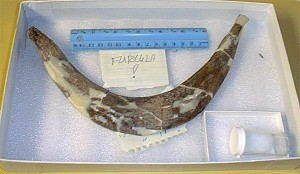
furcula
What do you think of when you say, “wishbone”? Turkey dinners! But what was the function of a wishbone – whose real name is furcula? Scientists recently put a live bird in a wind tunnel and had it fly against the currents – while X-raying it with a fluoroscope, or a moving X-ray machine. The bird’s wishbone acted like a spring, helping the wings with extra oomph. But while pterosaurs flew (without a wishbone!), T. rex certainly did not.
Corpolite
It’s not always easy to talk about coprolites with a straight face. We’ve been taught not to talk about this subject in polite company – but when it’s science, isn’t that DIFFERENT? Of course it is! Coprolites are poop, scat, excrement – you get the picture – and they tell us way more than you can imagine! Poop can tell us who made it, what the creature ate, what its eating habits and digestive system were like, and maybe something more specific about the animal it ate.
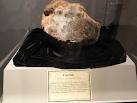
corpolite
Believe it or not, we’ve actually found T. rex poop. We know it’s T. rex poop because of its size (no one else who lived at that place, at the time, was big enough to make such a thing) and because it was made by a meat-eating dinosaur (it has pieces of bone inside). Some poop found with Sue had acid-etched duckbill bones mixed in. Because these bones are preserved, we know that it had a short and rapid digestive system. In contrast, bones eaten by a crocodile are completely dissolved within the digestive tract before excretion. This tells us that a T. rex digestive system worked more like a bird’s than a crocodile’s.
False poop! Beware, in your fossil hunting, of rocks disguised as coprolites.
Courtesy: unearthing T .Rex













 September 7th, 2012
September 7th, 2012  riffin
riffin 

